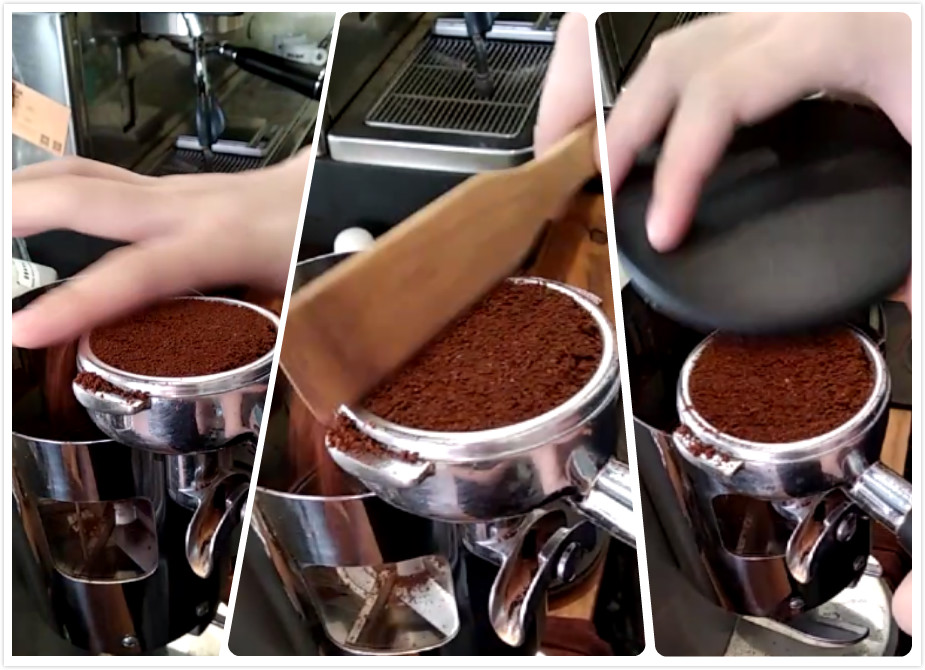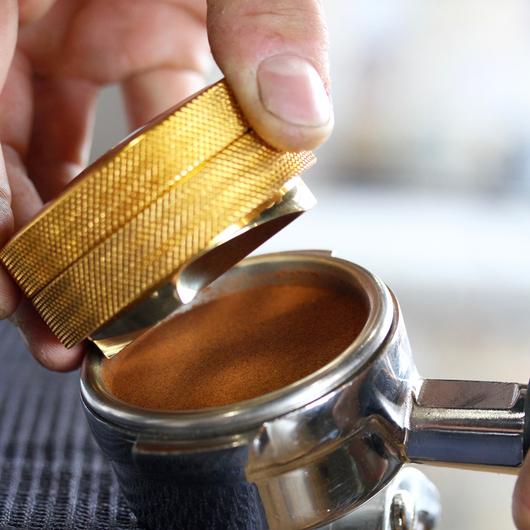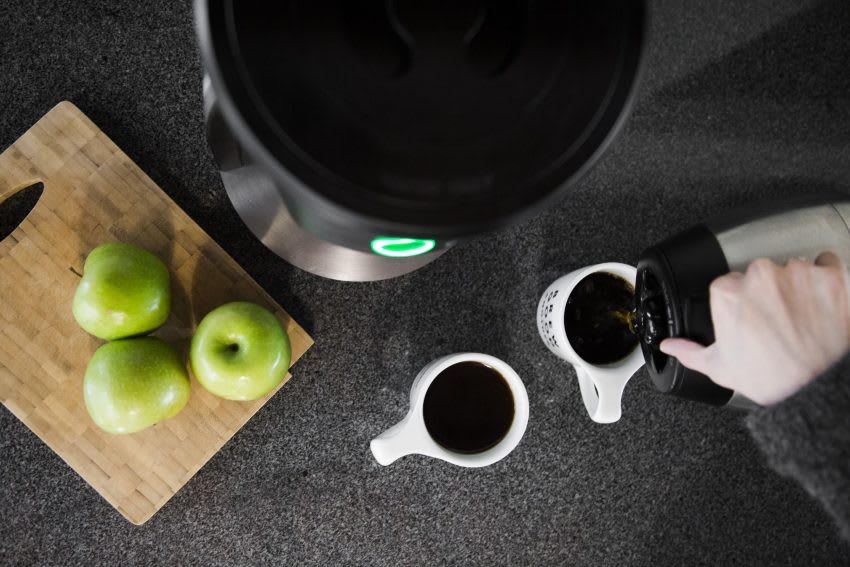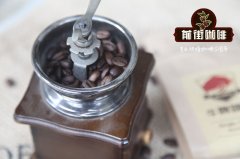The second basic action of making Italian coffee: powder

Professional coffee knowledge exchange more coffee bean information please follow the coffee workshop (Wechat official account cafe_style)
Last issue [details is technology] the first basic action of making espresso: it was said in the powder that powder is the first action of cloth powder, so today, the editor will talk about the action after receiving powder-cloth powder.
Cloth powder, in fact, after the coffee powder is ground, the coffee powder is manually put into the powder bowl and evenly distributed. The most important thing in this step is to be uniform (not smooth).

When it comes to the barista's daily operation, the movements of cloth powder are so varied and dazzling that all kinds of cloth powder artifacts emerge as the times require, such as powder ring, cloth powder cup, cloth powder implement, powder hammer cloth foundation.
As the saying goes, there are business opportunities only when there is demand, and the rapid development of powder distribution aids is naturally due to the defects and deficiencies of powder distribution technology. But even the most advanced cloth powder artifact still can not completely solve the problem of cloth powder mistakes. As a result, many people can't help but sigh: this kind of work of cloth powder is really metaphysics.
Let's not discuss metaphysics first. Today we will explain to you several major schools of cloth powder techniques, and by the way analyze the advantages and disadvantages of various techniques.
First, scraping flat cloth powder method.
The method of scraping flat cloth powder has three sharp tools: powder bin cover, bamboo and fingers. It is rumored that the master can control the amount of powder at will by using the powder warehouse lid, with its own "flat scraping" and "concave scraping" two stunts; the use of bamboo will make espresso bring its own fresh plant flavor; the master who uses fingers is even more powerful, "one Yang finger" stunts to Dacheng, the internal force can instantly shock and agglomerate powder, flick fingers in a flash, the piece of powder does not stick to the finger.

Ahem. The above is bullshit.
The method of scraping flat cloth powder is one of the most common and earliest contact methods for beginners. It usually cooperates with the movements such as pushing back and forth, and is divided into "square cloth powder" scraped around and left and right, "rotary cloth powder" scraped flat by 360 degrees, and so on.
The method of scraping flat cloth powder seems to be professional, but in fact it has little effect, uneven downward pressure may occur in the process of wiping, and what is smoothed is always only the surface part of the coffee powder, and the coffee powder in the lower layer and the edge is still randomly distributed, after pressing the powder, the pressed powder density is different in different parts. Relying solely on scraping flat cloth powder, whether the extraction will be perforated or not depends on the character.
Second, gently pat and knock the cloth powder method.
Tapping and tapping are two movements, but they are usually used continuously. The palm quickly taps the bottom of the handle and shakes the powder pile evenly, supplemented by a straight up and down tap, which can effectively eliminate the large gap in the powder layer, make the coffee powder pile denser, and increase the amount of powder that can be contained in the powder bowl.
The master who uses the method of tapping and knocking cloth powder can keep his hands clean to the maximum extent and reduce the operating steps. It is common in all kinds of barista competitions, with the neat movements of baristas, fluency and refinement. However, it is difficult for ordinary people to achieve satisfactory results in a relatively short period of time without a higher level of technical proficiency. Moreover, the smoothness of tapping the surface of cloth powder is poor, which may make some "obsessive-compulsive disorder" baristas feel that the effect is not as good as the scraping method, but in fact, the uniform effect is much better than the scraping method.
Third, the method of appliance-assisted cloth powder.
When it comes to auxiliary cloth powder, of course, each shows his or her magical powers. According to all kinds of artifacts on the market, there are mainly several kinds: ① stirring or shaking well; ② smoothing the surface; ③ sieve dispersion; ④ rotating distribution.

(photo source network)
Most artifacts can achieve the effects of mixing coffee powder, breaking knots, and evenly distributing particles, but there are also some defects, such as wasting coffee powder, more complex tools, certain skills to operate, and more downward pressure when distributing the powder. it may lead to internal cracks, just smooth the surface, distribution and thickness can not be guaranteed to be consistent, and so on.
In short, appliance assistance is not omnipotent, relying too much on assistive devices, and it is not good for baristas to understand their own hedge cooking and improve their skills.
Inspection of the effect of powder distribution
In the process of extraction, if it is found that the state of the coffee liquid will soon become unstable, a large jump, and the color will soon become very light, at this time, we can judge: there is a problem inside the pressed powder (cracks appear) or the uneven pressing of the coffee powder makes the less part of the coffee powder overextracted (and this is probably due to the uneven distribution of the powder) or the uneven distribution of the powder. So that the edge is not covered with coffee powder, causing the water to flow directly through there.
After the extraction is completed, take off the handle and observe the shape of the pressed powder. If there is no coffee powder on the edge, or the coffee powder is soaked or there is an obvious gap in the pressed powder, it is the extraction failure caused by uneven cloth powder.

Last
The ultimate goal of the cloth powder is to spread the coffee evenly in the whole powder bowl before pressing the powder, not only on the surface, but also on the inside and edge of the powder bowl. Cloth powder this step will directly affect the stability of your extracted coffee, if you want to get a qualified cup of Espresso, do not ignore this step.
Important Notice :
前街咖啡 FrontStreet Coffee has moved to new addredd:
FrontStreet Coffee Address: 315,Donghua East Road,GuangZhou
Tel:020 38364473
- Prev

Brewing skills-how to enhance or reduce the acidity of coffee by brewing?
Professional coffee knowledge exchange more coffee bean information Please pay attention to the coffee workshop (Wechat official account cafe_style) sour quality in coffee has always been controversial, some people think that sour quality is sharp, exciting, and smelly feeling, but others think that good sour quality is the representative of high-quality coffee. It's true that sour coffee doesn't make people happy, but it's bright, lively and rich in acid.
- Next

I'll tell you how to check and clean up the blockage of the exhaust pipe of the coffee roaster.
Professional coffee knowledge exchange more coffee bean information please follow the coffee workshop (Wechat official account cafe_style) [guide] all say that Blue Mountain is good, Blue Mountain is really good. But are you sure you're drinking the real Blue Mountain? I dare say that more than 90% of the people who boast that they drink blue mountains are fake blue mountains. It is not that there are no real goods in China, but we should learn to be among ten thousand kinds of fake goods.
Related
- Beginners will see the "Coffee pull flower" guide!
- What is the difference between ice blog purified milk and ordinary milk coffee?
- Why is the Philippines the largest producer of crops in Liberia?
- For coffee extraction, should the fine powder be retained?
- How does extracted espresso fill pressed powder? How much strength does it take to press the powder?
- How to make jasmine cold extract coffee? Is the jasmine + latte good?
- Will this little toy really make the coffee taste better? How does Lily Drip affect coffee extraction?
- Will the action of slapping the filter cup also affect coffee extraction?
- What's the difference between powder-to-water ratio and powder-to-liquid ratio?
- What is the Ethiopian local species? What does it have to do with Heirloom native species?

